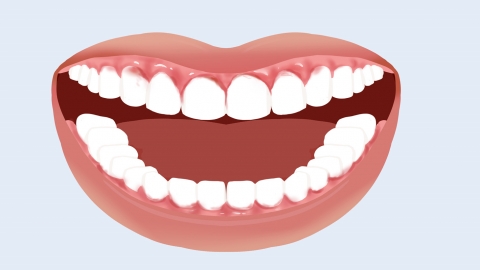How can teeth become white quickly?
Generally speaking, there is no such thing as a quick way to whiten teeth. To achieve whiter teeth, the following methods can be considered: whitening toothpaste, home whitening strips, ultrasonic teeth cleaning, cold light whitening, and dental veneers. A detailed analysis is as follows:

1. Whitening Toothpaste
Containing abrasives and mild whitening ingredients, whitening toothpaste removes surface stains through physical friction and chemical decomposition. It is suitable for daily maintenance of mild discoloration, works slowly, and cannot alter the natural color of teeth.
2. Home Whitening Strips
These strips contain low concentrations of hydrogen peroxide or carbamide peroxide. They are worn for a certain period daily and work by continuously releasing active oxygen to break down pigments. They are suitable for external staining or mild discoloration, have a relatively slow effect, but are convenient to use and less irritating.
3. Ultrasonic Teeth Cleaning
This method uses ultrasonic vibrations to remove extrinsic pigments such as tartar, smoke stains, and tea stains from the tooth surface. It is suitable for yellowing teeth caused by pigment deposition and can quickly restore the natural color of teeth. The entire process takes about 30 minutes, and temporary sensitivity may occur after the procedure, usually subsiding within 1-2 days.
4. Cold Light Whitening
A whitening agent is applied to the tooth surface and activated by cold light irradiation, accelerating the decomposition of the agent. It penetrates the enamel to break down pigments, whitening teeth by 3-5 shades in a single session. It is suitable for mild to moderate intrinsic staining, with results lasting 6-12 months. Pigmented foods should be avoided after treatment.
5. Dental Veneers
Ultra-thin porcelain or resin veneers are bonded to the tooth surface to cover discolored teeth. This method is suitable for severe fluorosis or tetracycline-stained teeth, offering immediate and long-lasting whitening effects. However, a small amount of enamel must be removed, making it an invasive treatment.
It should be noted that the effectiveness of teeth whitening varies due to individual differences and the causes of discoloration. Frequent whitening may damage the enamel, leading to sensitivity. It is recommended to limit whitening treatments to no more than 2-3 times per year and to consult a dentist beforehand to assess the condition of your teeth.








